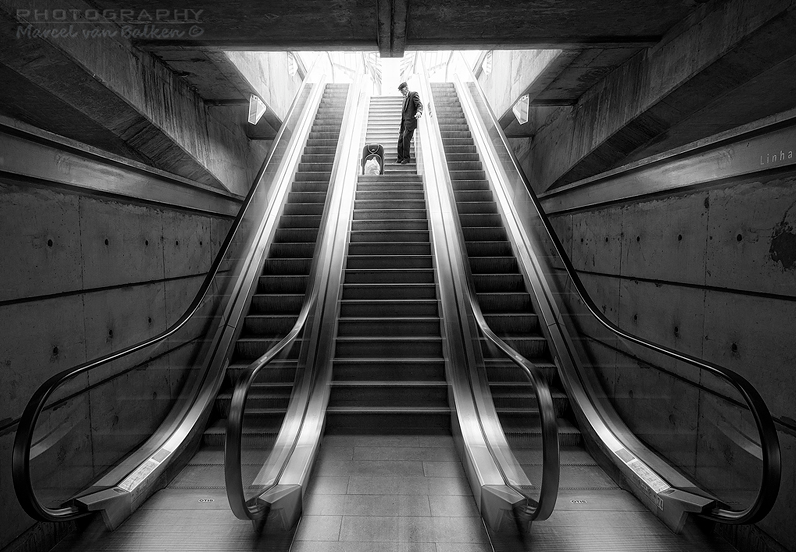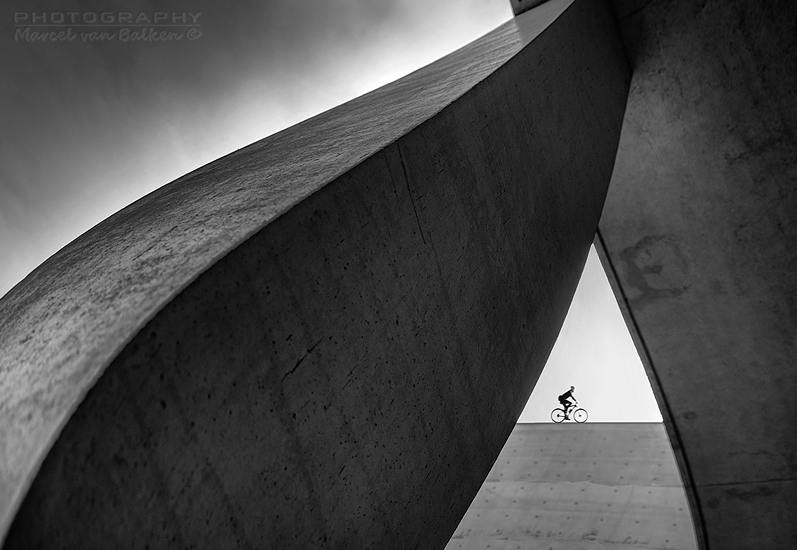Mastering the art of capturing stunning architectural photographs is no easy feat. As a beginner photographer, you will find that architectural photography requires patience and the ability to take a step back and observe.
It is important to keep in mind that every angle matters, in order to capture the best shot – this can often mean taking multiple shots from different angles. Furthermore, capturing a building’s unique features or textures can accentuate the image and create an impressive photograph.
Here are 10 tips for beginner photographers looking to go beyond the basics of architecture photography. From understanding light conditions, using the right lenses, and playing with shadows, each tip will help you make the most out of your architectural shoot. From novice to professional photographers, these tips will help you become a master at capturing stunning architectural photographs.
Choosing the Right Camera Gear
When it comes to photographing architecture, the most important tools are your camera and lens. The type of camera you use will determine what type of pictures you can create, so choose wisely! Digital SLR cameras are the best choice for a beginner photographer looking to capture stunning architecture photos. Investing in a good quality lens is also essential; wide-angle lenses give more depth and dimension to your shots and make buildings look much more impressive, but don’t forget to bring along a zoom lens too!
Useful accessories such as filters and tripod will also come in handy while shooting. Filters offer extra levels of protection, while tripods help to reduce blurring or ‘camera shake’ when long exposures become necessary. They also provide stability during low-light conditions, such as during night shots or indoors.
Think about all the elements that will come into play when photographing architecture—the design of the building, its construction materials, lighting, weather conditions etc.—and choose gear accordingly. Having great camera gear at your disposal won’t guarantee amazing photos – but it’s certainly an excellent starting point!
Understanding Your Camera Settings
For a professional-looking result, it’s important to understand the basics of your camera settings. Depending on the conditions, you may need to adjust shutter speed, ISO and aperture to achieve great shots.
- Shutter Speed: This setting controls how long the shutter stays open to allow light into the camera when you press the shutter release button. Since you’ll likely be shooting stationary subjects, choose a slower speed (1/60th to 1/125th of a second) as it will allow for good depth of field and help minimize blur from camera shake.
- ISO: This setting helps determine the brightness of your photo. Keep your ISO as low as possible—the higher you set it, the greater the noise will be in your image. However, if you’re shooting in low light conditions you may need to increase it slightly in order to get a decent exposure.
- Aperture: This setting controls your depth of field—how much of an image is in focus in front and behind its main subject. Use a large aperture (f2.8 or lower) if your goal is getting dramatic shots with blurred backgrounds. On the other hand, if you want everything sharp use a small aperture (f22 or higher).
Exploring Unique Perspectives

If you’ve ever taken a photo of a famous landmark, you know how hard it can be to get the perfect shot. With thousands of other tourists and photographers around, it can be difficult to get that unique or creative angle. When it comes to capture stunning architectural photographs, exploring unique perspectives and angles is key. Here are a few tips for you to start:
Get Close
Move in closer to the architecture instead of standing far away. This will not only help accentuate the architecture’s detailed features but also give the photos more impact.
Shoot from Above or Below
A great way to add drama to an architectural photo is by shooting from above or below the structure. This helps create more interesting shapes and shadows which will add more visual appeal to your final photos.
Change Your Point of View
Finding unexpected points of view is one of the best ways to capture awe-inspiring architectural photos. Think outside the box and explore other vantages such as rooftops, balconies, windows or alleyways that can offer alternate perspectives on familiar buildings.
Mastering Your Exposures
When you’re photographing architecture, it’s important to get your exposures right so the details of the structure are captured. Experiment with different settings to get the best results.
The two most important exposure settings are:
- Shutter speed: Aim for a faster shutter speed to freeze motion and avoid blur, but also be aware that lights and other moving objects in your photo will require a slower shutter speed to capture them properly.
- Aperture: Use aperture control to make sure all your shots are perfectly lit. Larger apertures give you more light, while smaller apertures will reduce the amount of light in your photo.
When capturing buildings and landscapes, use manual mode on your camera for maximum control over your exposure settings. Try out different combinations to get the right balance between brightness and clarity which will help you capture stunning architectural photographs.
Capitalizing on Light and Shadow
Light and shadow are integral elements of great architectural photography. Whereas the former brings out the detail of your chosen structure, the latter adds drama to emphasize its form. To create a fair balance of light and shadow, consider using a neutral density filter to reduce the dynamic range of bright areas.
Another useful trick is to choose an interesting foreground element (e.g., trees, monuments) to lead viewers into the image. Focusing on this element and partially blurring it with shallow depth of field will create an attractive entrance for viewers to explore your image’s main subject.
When capturing shadows, use them as creative elements in your composition by highlighting their shapes or size that contrast with the illuminated parts of the building. Additionally, you can make them more defined by choosing slower shutter speeds and longer exposures. Here are some tips for working with light and shadows:
- Shoot during a ‘golden hour’ near sunrise or sunset – when the light is much softer than during mid-day
- Use a ND filter to control hard highlights in bright scenes
- Include fascinating foreground elements leading viewers into your image
- Craft attractive compositions using both light and shadow
Utilizing Creative Framing
Creating interesting compositions is essential to taking great photos of architecture, and experimenting with the frame you use is a great way to do so. This can be done in several ways:
Leading Lines
Leading lines draw the viewer’s eye through a scene and into the subject. Elements like roads, paths, stairs or the edges of buildings can all act as natural leading lines that direct your viewers’ attention.
Symmetry & Balance
Symmetry is when two halves of an image are identical or nearly so, which creates an esthetically pleasing effect. This same idea can be applied to photographing architecture – creating balanced compositions by finding elements that mirror each other within the frame.
Negative Space/ Backgrounds
Negative space helps to create contrast between your main subject and the rest of the scene. This allows for more impactful photos as it brings out more texture and details about your subject that could otherwise get lost in a busy background. Be sure to pay attention to what is behind your subject, rather than just what’s in front of it.
Using Try Angles and Curves to Emphasize Visual Interest
Making use of angles and curves is a great way to create interesting visuals in your architectural photography. By using lines and shapes, you can draw the eye in a certain direction and create focal points that make the image more compelling.
Here are a few tips for incorporating angles and curves into your shots:
- Shoot at different angles – Move around the structure to get different perspectives, like shooting from the ground up or at an angle instead of straight-on.
- Utilize lines – Shoot along straight lines or use curved elements like arcs or circles to draw the viewer’s eye to certain parts of an image.
- Look for patterns – Look for repeating patterns such as windows or other architectural details that can be used to create visual interest.
- Experiment with reflections – Capture reflections in surfaces such as glass or water, these can add an interesting element and help emphasize certain design features of the architecture.
By making use of angles, curves, lines, and patterns in your architectural photography, you can add more visual interest to your images and capture stunning shots.
Enhancing Images Through Post-Processing Techniques
Post-processing can help to add the finishing touches to your architectural photographs. It allows for a broad range of modifications, from the subtle to the dramatic, so you’ll want to take some time to experiment.
There are a number of techniques you can use highlight lines and shadows:
Highlighting Contrast
Adding contrast to an image is an effective way to make your architectural photographs ‘pop’. Some image-editing software includes pre-set filters that can help you achieve this effect. You can also use curves and levels to adjust the contrast manually; just keep in mind that you should make small adjustments at a time until you’ve achieved the look that you want.
Enhancing Colors and Details
Enhancing colors and details will give your photograph an extra layer of depth and realism. In particular, it helps make textures more visible in the photograph; for example, in wood or stone structures. You should try using color filters, such as sepia or black & white effects, as well as sharpening and blurring tools.
Cropping Your Images
Cropping your images is a great way to remove any distractions from around the object of focus in your photo – that way, everything stands out clearer. All it takes is a few clicks – simply draw or select a shape around the elements you want to keep in the photograph and then click ‘crop’!
Exploring Different Locations for a Unique Point of View
When it comes to capturing stunning architecture photos, the key is to explore various locations for a unique point of view. While capturing the building from the front or at eye-level can be great for certain shots, you can get a new perspective by exploring different angles. If there’s a rooftop or balcony nearby, climb up and get a unique shot of the building from above. You can also find interesting perspectives by crouching down to get a low angle or walking around to capture different sides of the structure.
Don’t forget – any part of the building or outside grounds can make interesting subjects, such as statues, doors, fountains and more. Wherever possible (and safe!), you should try getting close-up details to add depth and interest to your shots. Also remember that night time photography offers unique perspectives on buildings – experiment with lighting techniques such as light painting and shooting at twilight for amazing results!
Observing Good Composition Techniques
Now that you’ve mastered the basics of photographing architecture, it’s time to take your photos up a notch. Learning good composition techniques is the key to creating captivating images that impress your viewers.
Here are a few fundamental tips to help you compose shots like a pro:
- Utilize the rule of thirds – dividing a frame into nine equal boxes and positioning elements along those lines will help create an eye-pleasing image.
- Include leading lines – directing attention to where you want it with something like a road or path will make sure your subject catches the eye.
- Balance negative and positive space – using this type of contrast can give your shot depth and really bring it to life.
- Pay attention to framing – use the environment or objects around the building to add visual interest to your photograph.
By following these guidelines, you can start creating stunning architectural photographs that will stand out from the crowd.
Conclusion
As a beginner photographer, you should never forget that mastering the art of architectural photography is a time-consuming skill. With practice and the right tools, you can take stunning architectural photos that will make people stop and stare.
Whether you’re a professional or an amateur photographer, the tips in this article will help you take your architectural photography skills to the next level. From capturing the right angles and controlling the light to understanding the rule of thirds, these tips will make you an expert in no time. So get out there and make some beautiful architectural photos!

Photos in this article belong to the author Marcel van Balken
https://www.photure.nl/


